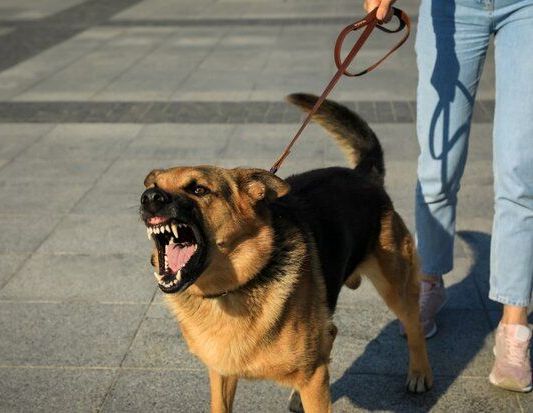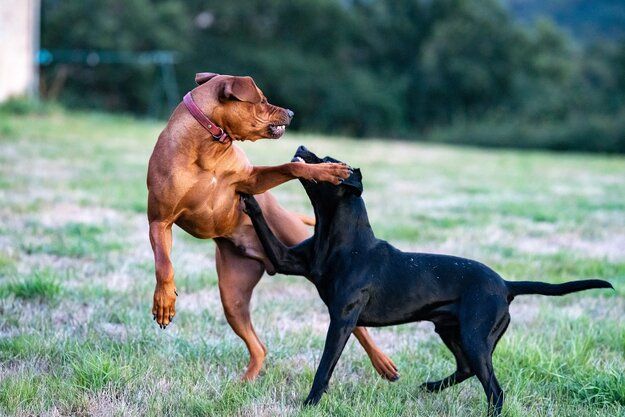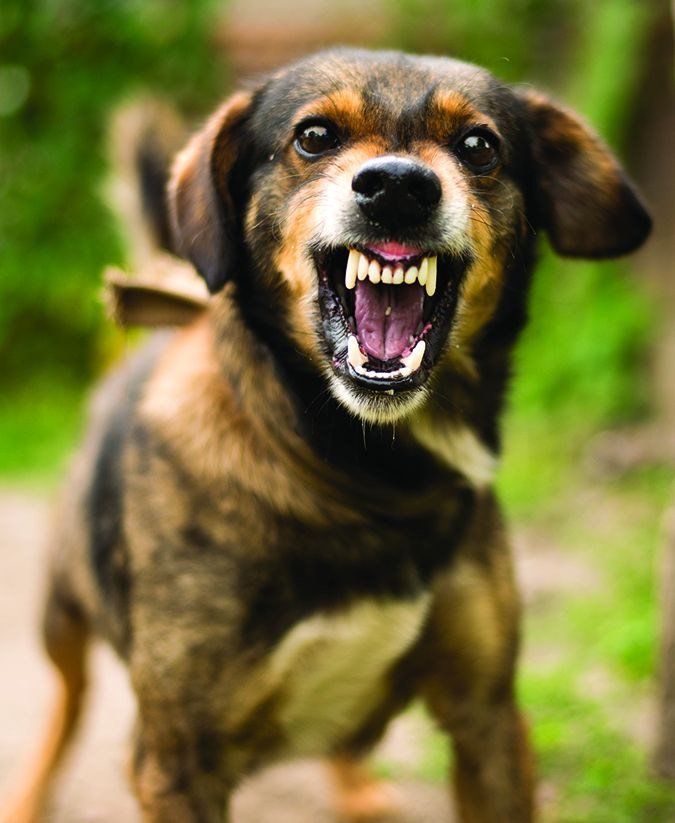Tips on Aggressive Dog Training from a Dog Behaviorist
The Importance of Help from a Professional Dog Trainer
Training an aggressive pet requires patience, understanding, and a structured approach; addressing aggression demands a strategy that prioritizes the safety of both the dog and those around them. Here are essential steps and considerations when working with an aggressive dog.
Seek professional guidance. Consulting a certified dog behaviorist or a professional dog trainer experienced in handling aggression is crucial. They can assess the situation, identify triggers, and create a customized training plan suitable for the specific needs of your dog.
Recognize the stimuli that provoke aggression in your dog. It could be other dogs, strangers, specific environments, or certain objects. Understanding these triggers is fundamental to managing and modifying the dog's behavior.
Create a safe environment, safety is paramount when dealing with an aggressive dog. Use a muzzle or a harness to prevent bites or incidents while training. Establish a secure area where training sessions can take place without external distractions.
Speak With A Dog
Training Expert
Speak With A Dog Training Expert
Thank you for contacting us!
We will contact you shortly!
Please try again later.
The Importance of Help from a Professional Dog Trainer
Training an aggressive pet requires patience, understanding, and a structured approach; addressing aggression demands a strategy that prioritizes the safety of both the dog and those around them. Here are essential steps and considerations when working with an aggressive dog.
Seek professional guidance. Consulting a certified dog behaviorist or a professional dog trainer experienced in handling aggression is crucial. They can assess the situation, identify triggers, and create a customized training plan suitable for the specific needs of your dog.
Recognize the stimuli that provoke aggression in your dog. It could be other dogs, strangers,
Speak With A Dog
Training Expert
Speak With A Dog Training Expert
Thank you for contacting us!
We will contact you shortly!
Please try again later.
specific environments, or certain objects. Understanding these triggers is fundamental to managing and modifying the dog's behavior.
Create a safe environment, safety is paramount when dealing with an aggressive dog. Use a muzzle or a harness to prevent bites or incidents while training. Establish a secure area where training sessions can take place without external distractions.
Employ positive reinforcement techniques during training. Reward good behavior with treats, praise, or toys to encourage the dog to exhibit desirable actions and redirect their focus from aggressive behavior towards positive actions.
Desensitization and counterconditioning: gradually expose the dog to the triggers in a controlled manner while maintaining a safe distance. Pair the trigger with something positive (like treats or playtime) to change the dog's emotional response. Over time, the dog should associate the trigger with positive experiences, reducing the aggressive response.
Consistency and patience are key in aggressive dog training. Follow the training plan diligently and be patient. Behavior modification takes time, and setbacks are normal. Stay calm and composed to avoid escalating the situation.
Prioritize Safety During Aggressive Dog Training
Controlled socialization with other dogs and people in a safe environment is important. Gradually introduce them to new experiences, ensuring positive interactions to build their confidence and reduce fear or aggression towards unfamiliar situations.
Engage your pet in regular physical exercise and mental stimulation activities like puzzle toys or training games. A tired and mentally stimulated dog is less likely to exhibit aggressive behavior.
Avoid punishment; punishment or harsh training methods can exacerbate aggression and erode trust between you and your dog. Instead, focus on positive reinforcement techniques to encourage desired behavior.
In severe cases where aggression is deeply rooted or due to underlying medical issues, a veterinarian might prescribe medication or supplements to aid in behavior modification. This should be used in conjunction with behavior training under professional guidance.
Employ positive reinforcement techniques during training. Reward good behavior with treats, praise, or toys to encourage the dog to exhibit desirable actions and redirect their focus from aggressive behavior towards positive actions.
Desensitization and counterconditioning: gradually expose the dog to the triggers in a controlled manner while maintaining a safe distance. Pair the trigger with something positive (like treats or playtime) to change the dog's emotional response. Over time, the dog should associate the trigger with positive experiences, reducing the aggressive response.
Consistency and patience are key in aggressive dog training. Follow the training plan diligently and be patient. Behavior modification takes time, and setbacks are normal. Stay calm and composed to avoid escalating the situation.
Prioritize Safety During Aggressive Dog Training
Controlled socialization with other dogs and people in a safe environment is important. Gradually introduce them to new experiences, ensuring positive interactions to build their confidence and reduce fear or aggression towards unfamiliar situations.
Engage your pet in regular physical exercise and mental stimulation activities like puzzle toys or training games. A tired and mentally stimulated dog is less likely to exhibit aggressive behavior.
Avoid punishment; punishment or harsh training methods can exacerbate aggression and erode trust between you and your dog. Instead, focus on positive reinforcement techniques to encourage desired behavior.
In severe cases where aggression is deeply rooted or due to underlying medical issues, a veterinarian might prescribe medication or supplements to aid in behavior modification. This should be used in conjunction with behavior training under professional guidance.
Training an aggressive dog is an ongoing process. Even after noticeable improvements, continuous training and monitoring are necessary to maintain positive behavior.
Training an aggressive dog requires a combination of professional guidance, patience, consistency, and positive reinforcement techniques. By understanding triggers, providing a safe environment, and employing structured training methods, it's possible to modify aggressive behavior and foster a positive relationship with your dog. Always prioritize safety and seek professional help when needed to ensure the well-being of your dog and those around them.
Training an aggressive dog is an ongoing process. Even after noticeable improvements, continuous training and monitoring are necessary to maintain positive behavior.
Training an aggressive dog requires a combination of professional guidance, patience, consistency, and positive reinforcement techniques. By understanding triggers, providing a safe environment, and employing structured training methods, it's possible to modify aggressive behavior and foster a positive relationship with your dog. Always prioritize safety and seek professional help when needed to ensure the well-being of your dog and those around them.



